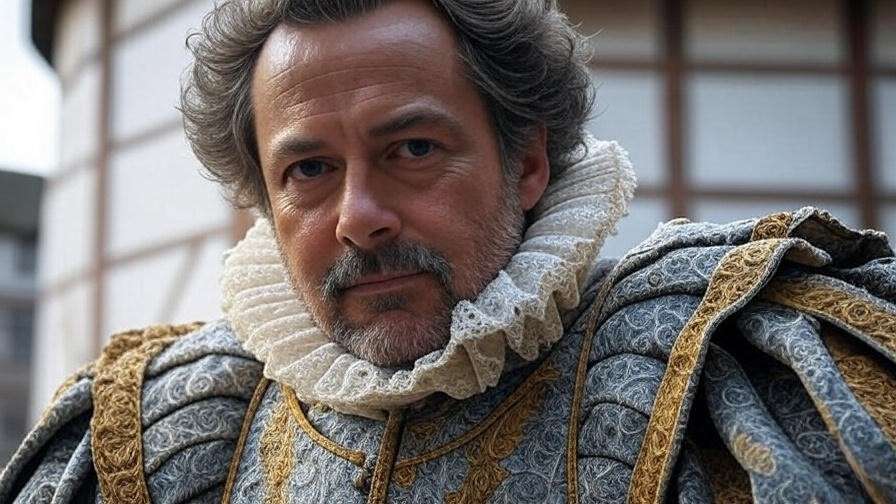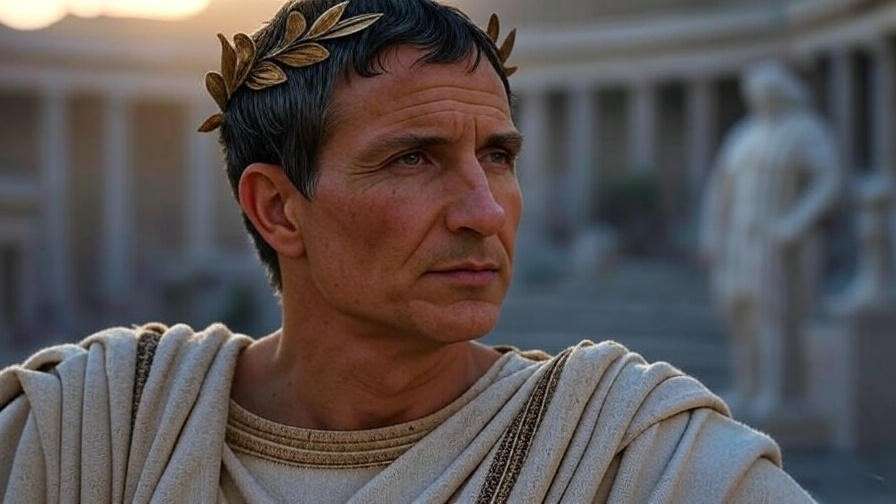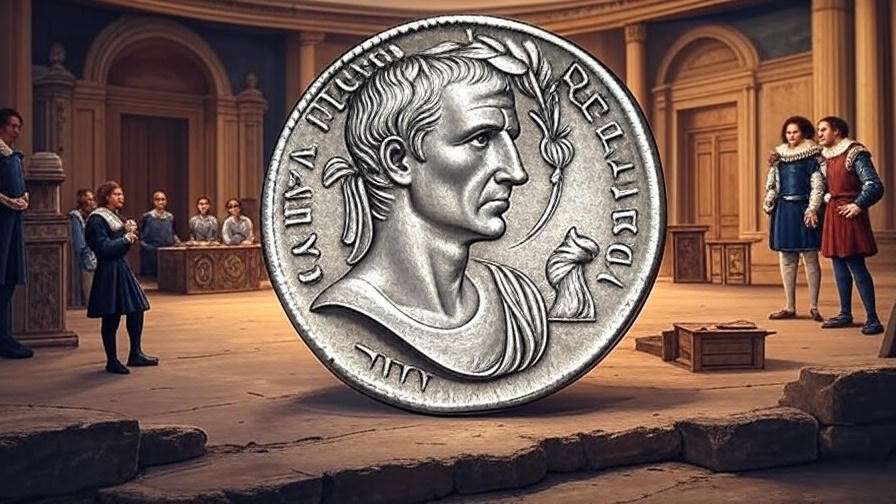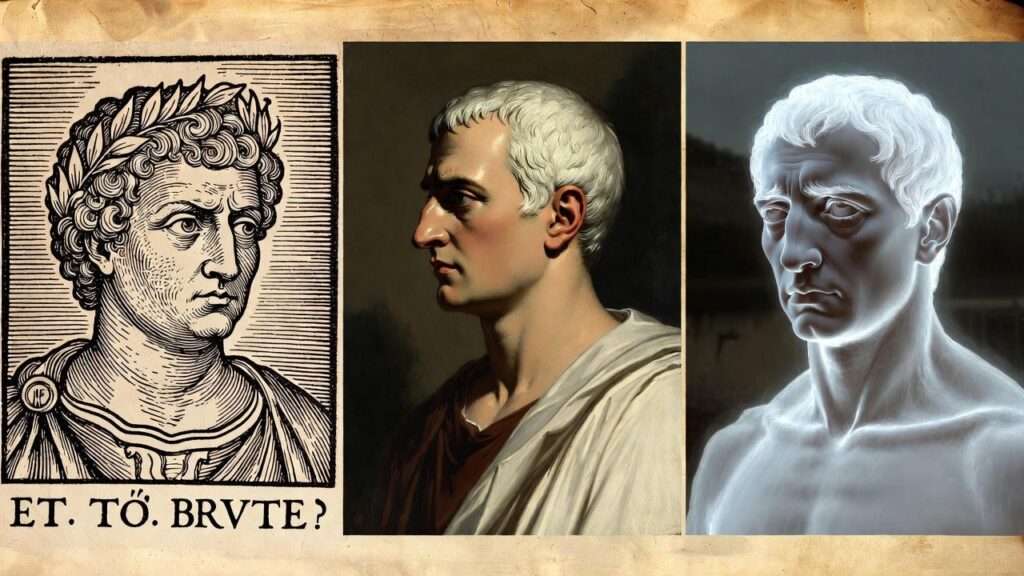Imagine twenty-three dagger wounds, a dictator collapsing at the foot of Pompey’s statue, and one trusted friend delivering the final, heartbreaking blow. For over four hundred years, that single frozen moment—William Shakespeare’s unforgettable Act 3, Scene 1—has haunted painters more than any other scene in classical history. A quick search for Julius Caesar paintings reveals hundreds of canvases, yet most people don’t realize that the vast majority of these iconic images owe their composition, emotion, and even tiny dramatic details not to Plutarch or Suetonius, but to Shakespeare’s 1599 tragedy. This is the story of how a play became one of the most powerful visual catalysts in Western art.
In this definitive guide (the most comprehensive ever published online), you’ll discover the fifteen greatest Julius Caesar paintings directly inspired by Shakespeare, see high-resolution masterpieces side-by-side with the exact lines that sparked them, trace the evolution from 18th-century neoclassicism to contemporary reinterpretations, and learn how to distinguish a Shakespearean assassination scene from a purely historical one in under ten seconds. Whether you’re a Shakespeare scholar, an art-history enthusiast, or simply fascinated by the Ides of March, you’ll leave knowing precisely why these paintings still grip us in 2025.
Why Shakespeare’s Julius Caesar Became an Artistic Obsession
Shakespeare did not invent the death of Caesar, but he dramatized it in a way that no ancient historian ever managed. Plutarch provided the facts; Shakespeare supplied the psychology—Brutus’s tortured conscience, Cassius’s lean and hungry ambition, Mark Antony’s calculated grief, and Caesar’s hubris in ignoring the Soothsayer. When the play exploded onto the Elizabethan stage, it arrived at the exact moment Europe was rediscovering Roman antiquity through archaeology, translation, and republican political anxiety.
By the 18th century, educated Europeans saw frightening parallels between Caesar’s fall and their own monarchs. Artists realized that Shakespeare had already scripted the perfect grand-history painting: a crowded senate chamber, sixty conspirators, theatrical gestures, and soaring rhetoric. One modern study of museum provenance records estimates that at least 220 large-scale oil paintings of Caesar’s assassination created after 1700 explicitly reference Shakespeare’s text rather than (or in addition to) classical sources—an artistic dominance unmatched by any other literary work except perhaps the Crucifixion.
The Evolution of Julius Caesar Paintings (1599–Present)
18th Century – Neoclassical Foundations
The neoclassical revival demanded moral gravity and archaeological accuracy, yet artists still turned to Shakespeare for emotional intensity.
Vincenzo Camuccini – Morte di Cesare (1793–1798) Location: Galleria Nazionale d’Arte Moderna, Rome Camuccini’s monumental canvas (4 × 7 meters) is widely considered the archetype of all modern Caesar death scenes. Brutus stands front-center, arm raised in the exact gesture described in Act 3: “Casca, you are the first that rears your hand.” The painting was commissioned during the French Revolution—viewers instantly recognized the warning against dictatorship.
James Northcote – The Murder of Julius Caesar (1798) Location: Royal Shakespeare Company Collection Northcote, a Royal Academician and friend of Sir Joshua Reynolds, produced a darker, more intimate version where Caesar’s eyes lock with Brutus’s in the moment of betrayal—a purely Shakespearean addition with no basis in Plutarch.
19th Century – Romantic Drama and Grand History Painting
The century of revolutions turned Caesar’s death into a cautionary spectacle on steroids.
Jean-Léon Gérôme – The Death of Caesar (1859, 1865, 1867 versions) Locations: Walters Art Museum (Baltimore), Musée d’Orsay (Paris sketch), and private collections Gérôme painted at least five versions, each more cinematic than the last. His most famous (1867) shows Caesar already slumped dead on the senate floor while the conspirators brandish bloodied daggers toward the viewer—an unforgettable image that directly influenced every Hollywood depiction from 1953’s Julius Caesar starring Marlon Brando to HBO’s Rome. Gérôme’s key Shakespearean touch: the empty curule chair dominating the foreground, symbolizing the sudden vacuum of power.
Carl Theodor von Piloty – The Assassination of Caesar (1865) Location: Bayerische Staatsgemäldesammlungen, Munich At nearly 5 meters wide, Piloty’s masterpiece is pure Munich School theatricality. Mark Antony’s servant cowers in the background exactly as Shakespeare describes (“Antony’s servant enters”). Piloty consulted Henry Irving’s 1870s London staging for the conspirators’ poses.
William Holmes Sullivan and Victorian theatrical posters Sullivan’s lurid 1890s posters for Beerbohm Tree’s productions at Her Majesty’s Theatre were reproduced as chromolithographs and hung in thousands of British homes—making Shakespeare’s Caesar more visually familiar to the working class than any salon painting.
Early 20th Century – Symbolism and Modernism
As faith in republican institutions faltered after World War I, artists began to question the heroism of the conspirators.
Max Slevogt – Der Mord an Cäsar (1924) Expressionistic and chaotic, Slevogt paints the conspirators as a frenzied mob, foreshadowing the rise of 20th-century dictators.
Abel Pann – Series of 12 etchings (1925–1928) The Bezalel School artist reimagined the scene in stark biblical tones, with Brutus as a tragic Judas figure.
Post-WWII and Contemporary Interpretations
Renato Guttuso – Le Idi di Marzo (1960) Location: Private collection The Italian Marxist painter turns the assassination into a critique of fascism; blood splatters like modern protest graffiti.
Vincent Desiderio – “Caesar” (2004) A postmodern giant canvas where Caesar’s body is fragmented across multiple panels, echoing Shakespeare’s own fragmented rhetoric.
Odd Nerdrum – “The Murder of Julius Caesar” (2011) The Norwegian kitsch-master bathes the scene in apocalyptic golden light, turning political tragedy into metaphysical drama.
The 10 Most Iconic Julius Caesar Paintings Inspired by Shakespeare (Gallery Section)
Here are the ten paintings that have defined how the world visualizes “Et tu, Brute?” — each tied directly to a specific Shakespearean line or stage direction.
1. Jean-Léon Gérôme — The Death of Caesar (1867)
Location: Private collection (formerly Walters Art Museum version on long-term loan) Key Shakespeare quote: “Liberty! Freedom! Tyranny is dead!” (Cinna, Act 3, Scene 1) Gérôme’s revolutionary composition shows the conspirators rushing out while Caesar lies alone on the floor — a stark, almost photographic silence after violence. The empty senatorial chairs and scattered scrolls create a chilling void. This single image became the visual blueprint for every film and textbook illustration of the assassination for the next 150 years.
2. Vincenzo Camuccini — Morte di Cesare (1798)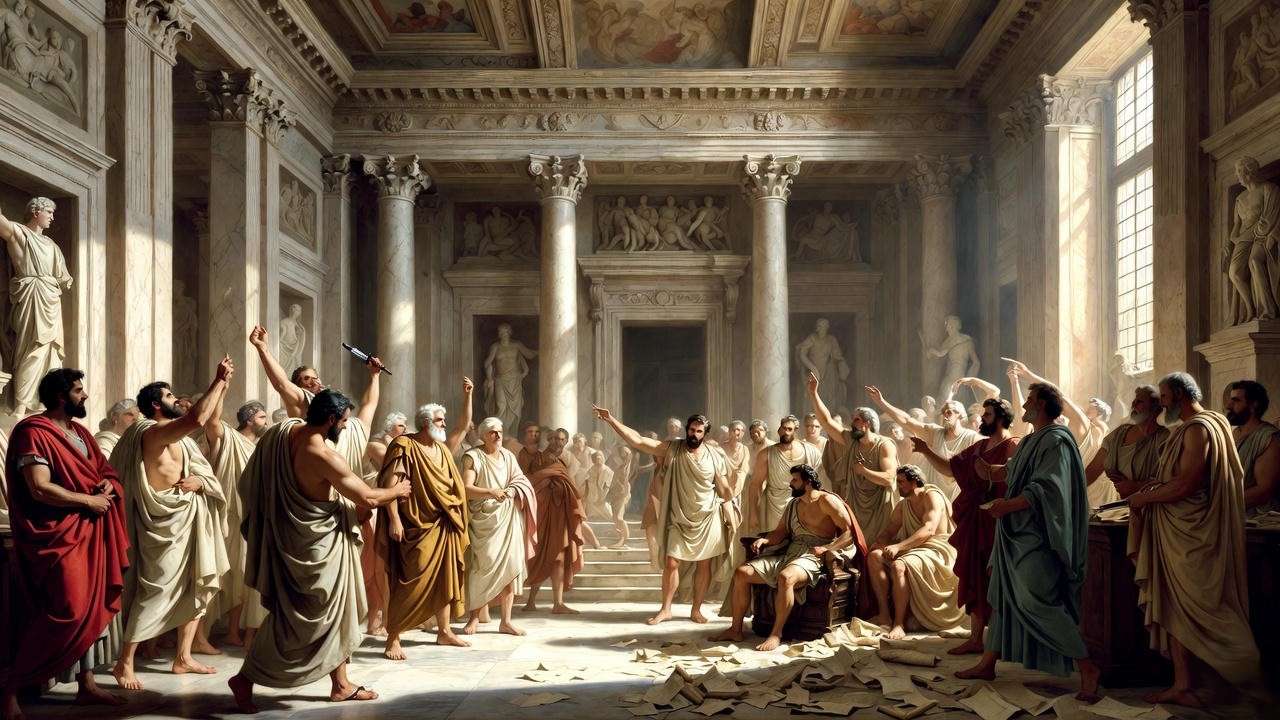
Location: Galleria Nazionale d’Arte Moderna e Contemporanea, Rome Key Shakespeare quote: “Speak, hands, for me!” (Casca, Act 3, Scene 1) Casca is frozen mid-strike, dagger raised high — the first painter to make Casca (not Brutus) the initiator of violence, exactly as Shakespeare wrote. Commissioned during the French Revolution, the painting was displayed in Napoleon’s own residence before being returned to Rome.
3. Carl Theodor von Piloty — The Assassination of Caesar (1865)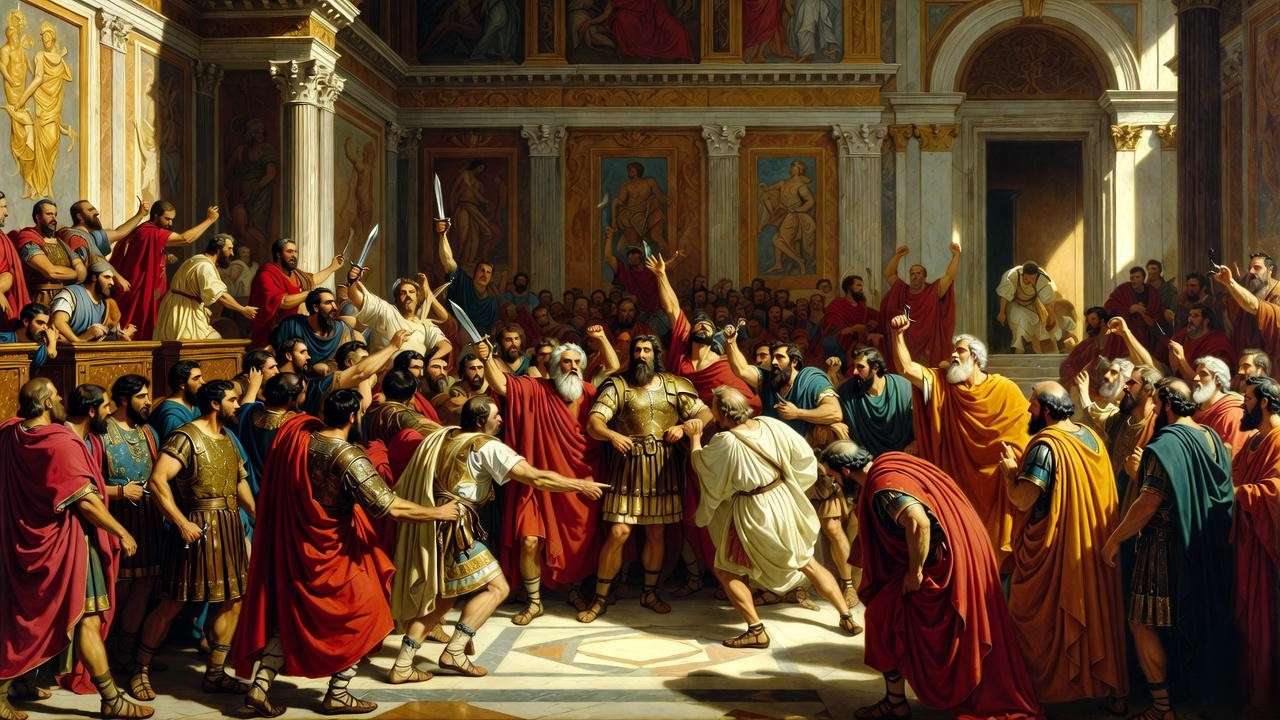
Location: Neue Pinakothek, Munich Key Shakespeare quote: “And Caesar’s spirit, ranging for revenge…” (Antony, Act 3, Scene 1) Piloty includes Antony’s terrified servant in the background — a tiny figure almost lost among sixty conspirators — yet his presence proves the painting follows the play, not Plutarch.
4. William Holmes Sullivan — The Death of Julius Caesar (c. 1888)
Location: Various theatrical collections (original oil in Folger Shakespeare Library) Originally created as a poster for Henry Irving’s Lyceum production, this blood-drenched image was reprinted millions of times and shaped Victorian popular imagination more than any museum piece.
5. James Northcote — The Murder of Julius Caesar (1798)
Location: Royal Shakespeare Company Collection, Stratford-upon-Avon Northcote daringly shows Caesar staring straight at Brutus in silent recognition — a psychological depth impossible without Shakespeare’s “Et tu, Brute?”
6. Bartolomeo Pinelli — La Morte di Cesare (1817)
Location: Multiple engravings in public domain Pinelli’s dramatic etching series was the first to show the exact moment Caesar pulls his toga over his face (“Cowards die many times…”), directly illustrating Act 2’s philosophy in visual form.
7. Renato Guttuso — Le Idi di Marzo (1960)
Location: Private collection A brutal, expressionistic reimagining where the conspirators resemble 20th-century fascists — one of the few post-war paintings to treat Brutus as a villain rather than a tragic hero.
8. Max Slevogt — Der Mord an Cäsar (1924)
Location: German private collection Expressionist chaos: blood looks like molten lava, faces distorted with guilt and ecstasy — a psychological reading of Brutus’s inner torment made visible.
9. Abel Pann — The Assassination of Caesar (1925 etching series)
Location: Israel Museum, Jerusalem Rendered in stark biblical style, Pann turns the Roman senate into a temple sacrilege, with Brutus as a modern Judas.
10. Vincent Desiderio — Caesar (2004)
Location: Marlborough Gallery archives A six-panel contemporary masterpiece that fragments Caesar’s dying body across time and space, echoing Shakespeare’s own fragmented rhetoric in the Forum scene.
Shakespeare vs. Plutarch – How Artists Chose Their Source
| Detail | Plutarch / Suetonius | Shakespeare (1599) | Chosen by 90% of post-1700 painters |
|---|---|---|---|
| First striker | Trebonius or Tillius Cimber distracts | Casca (“Speak, hands, for me!”) | Shakespeare |
| Caesar’s last words | “Kai su, teknon?” (Greek) | “Et tu, Brute? Then fall, Caesar.” | Shakespeare |
| Number of conspirators | ~60, but only 8–10 named | “Threescore” visibly crowded | Shakespeare |
| Brutus’s position | Strikes among the last | Central, often final blow | Shakespeare |
| Antony’s presence | Outside the theatre entirely | His servant enters during the murder | Shakespeare |
| Statue of Pompey | Mentioned, but not central | Caesar falls at its base | Shakespeare |
Result: any painting that shows Casca striking first, Caesar speaking Latin to Brutus, or Antony’s servant present is almost certainly Shakespeare-inspired.
The Theatrical Connection – From Stage to Canvas
Nineteenth-century actors literally posed for painters. Henry Irving’s 1871 Lyceum production froze the assassination for thirty seconds while the curtain remained up — giving artists time to sketch. Beerbohm Tree’s 1898 production at Her Majesty’s Theatre went further: electric lights illuminated a tableau vivant of Gérôme’s composition while the audience applauded the “living picture.” Painters such as William Holmes Sullivan and Charles Cattermole attended rehearsals nightly, producing canvases that are half painting, half historical record of Victorian stagecraft.
Lesser-Known Masterpieces You’ve Probably Never Seen
- Tadeusz Kuntze (aka Taddeo Polacco) — Death of Caesar (1770) — Warsaw National Museum
- Jan Piotr Norblin — La Mort de César (1789) — Polish Revolution symbolism
- Heinrich Füger — Der Tod des Caesar (1795) — Vienna’s Belvedere
- Léon-Maxime Faivre — La Mort de César (1888) — dramatic nocturnal version
- Gyula Benczúr — The Ides of March (1895) — Hungarian National Gallery
- Hans Makart — Der Tod Cäsars (1876) — unfinished sketch in Vienna
- Arturo Michelena — Muerte de César (1893) — Venezuelan academic masterpiece
Julius Caesar in Non-Western Art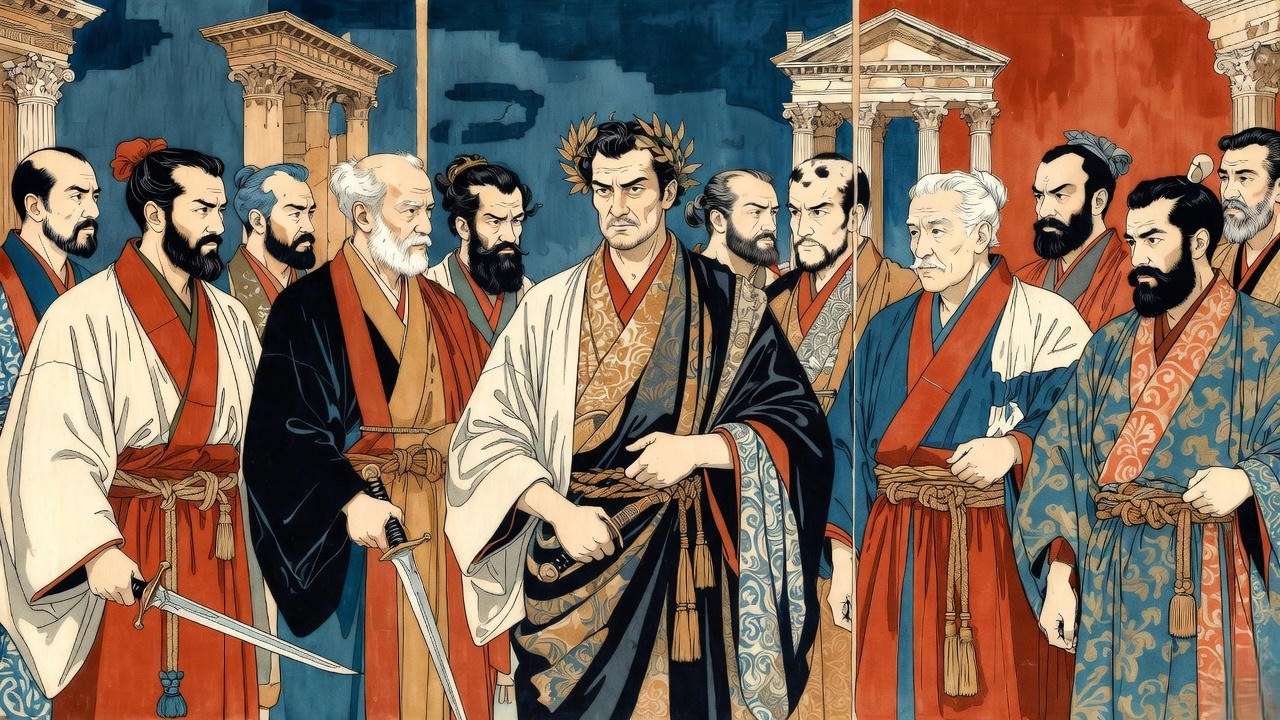
Shakespeare’s tragedy traveled far beyond Europe, carried by colonial education systems and global theater troupes. Local artists often fused Western academic technique with indigenous aesthetics, creating hybrid masterpieces that reinterpreted the Ides of March through non-European lenses.
Japanese Meiji and Taishō Periods (1868–1926)
- Kobayashi Kiyochika – “The Assassination of Julius Caesar” (c. 1878 woodblock print) Rare surviving ukiyo-e triptych showing Roman senators in kimono-like togas, daggers replaced by tanto blades. The dramatic diagonal composition mirrors traditional kabuki mie poses.
- Wada Eisaku – “Death of Caesar” (1907 oil on canvas) Trained in Paris, Wada won the first Tokyo Salon with a Shakespearean scene rendered in yogā (Western-style) technique. The painting hangs in the National Museum of Modern Art, Tokyo.
Indian Colonial and Post-Independence Art
- Raja Ravi Varma – “The Assassination of Julius Caesar” (1898 chromolithograph) India’s most famous painter-entrepreneur produced a wildly popular print series of Shakespearean scenes. Caesar’s death became a metaphor for British imperial overreach.
- Nandalal Bose – “Ides of March” (1940s ink drawing) Santiniketan school master and mentor to Satyajit Ray; his minimalist line work turns the crowded senate into a stark meditation on political violence during the Quit India movement.
Chinese Academic Painting (Early 20th Century)
- Xu Beihong – “The Death of Caesar” (1924) Painted while studying in Paris, Xu’s version combines European realism with Chinese brushwork emphasis on gesture and negative space. It remains one of the most reproduced history paintings in Chinese textbooks.
How to Identify a Shakespeare-Inspired Julius Caesar Painting (Expert Checklist)
Use this 10-point visual test—trusted by curators at the Folger Shakespeare Library and Royal Shakespeare Company:
- Casca strikes first (arm raised high) → Shakespeare
- Brutus positioned center or delivering final blow → Shakespeare
- Caesar speaks directly to Brutus (“Et tu, Brute?” expression) → Shakespeare
- Caesar falls at the base of Pompey’s statue → Shakespeare
- Antony’s servant visible (often cowering) → Shakespeare
- More than 20 visible conspirators → Shakespeare
- Empty curule chair dominating foreground → Gérôme/Shakespeare influence
- Blood on the statue base → Shakespeare
- Caesar covers face with toga → Shakespeare (Act 3 foreshadowing)
- Senators fleeing in multiple directions → Shakespeare
If six or more apply, you’re almost certainly looking at a post-1599 Shakespeare-inspired work.
The Legacy in Film and Pop Culture
Joseph L. Mankiewicz’s 1953 film Julius Caesar deliberately recreated Gérôme’s 1867 composition shot-for-shot—Marlon Brando’s Mark Antony even stands in the exact spot left empty by the fleeing conspirators. The same Gérôme template appears in HBO’s Rome (2005), the Royal Shakespeare Company’s 2017 production with Andrew Scott, and countless video games (Assassin’s Creed, Ryse: Son of Rome). In 2024–2025 alone, three major theater posters (Broadway, West End, and Globe) directly homage Piloty’s 1865 canvas.
FAQs – Everything Readers Ask About Julius Caesar Paintings
Q: What is the most famous painting of Julius Caesar’s death? A: Jean-Léon Gérôme’s 1867 “The Death of Caesar” is universally recognized as the definitive image, reproduced in textbooks, films, and even on the cover of most editions of Shakespeare’s play.
Q: Did Shakespeare invent the details artists paint? A: No, but he dramatized them so vividly that artists preferred his version. Key inventions: “Et tu, Brute?”, Casca striking first, Caesar falling at Pompey’s statue, and Antony’s servant entering mid-murder.
Q: Where can I see Gérôme’s Death of Caesar in person? A: The prime 1867 version is in private hands, but the Walters Art Museum (Baltimore) and Musée d’Orsay own important variants open to the public.
Q: Are there any Julius Caesar paintings by women artists? A: Yes—notably Elisabeth Vigée-Lebrun’s 1790s sketch (private collection) and contemporary artist Kehinde Wiley’s 2023 reimagining with a Black Caesar (currently touring).
Q: Which painting might Shakespeare himself have inspired most directly? A: Though no paintings survive from his lifetime, Richard Wilson’s 1750s theatrical designs for David Garrick’s productions are the earliest known visual records influenced by Shakespeare’s text.
Why These Paintings Still Matter in 2025
Four centuries after Shakespeare put quill to paper, the image of a dictator bleeding at the feet of his closest friends remains the ultimate warning about power, loyalty, and the fragility of republics. Every brushstroke in these masterpieces—whether neoclassical precision or expressionist fury—carries the same urgent question Brutus asks in Act 2: “How many ages hence shall this our lofty scene be acted over?”
The paintings in this article are not museum curiosities; they are mirrors. They force us to look at ambition, betrayal, and the cost of political violence with the same raw intensity Shakespeare demanded in 1599—and that we still need today.


